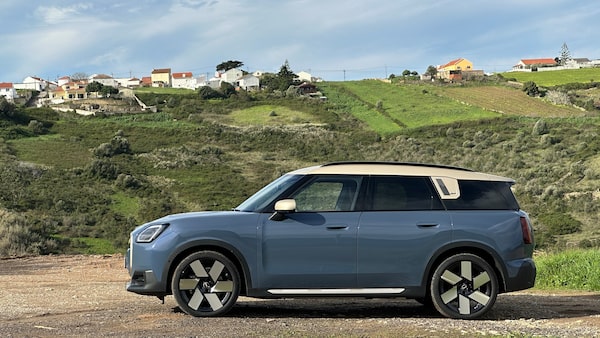
Mini makes a big deal of its 'go-kart handling,' which is a marketing way of describing a small car with wheels in the far four corners.Mark Richardson/The Globe and Mail
The new Mini Countryman, already the largest model made by the compact brand, is now even bigger in its third generation and more powerful. How ever will it all end?
There will be three Countryman variations available in Canada this year. The first to arrive is the S All4, which will be the basic and most popular model with a starting price of $45,990. I didn’t drive that car here in Portugal – Mini brought along its more powerful Countryman John Cooper Works All4 edition, which makes 71 more horsepower and costs $10,300 more. The JCW should arrive in dealers this July.
I also drove the all-electric Countryman SE All4, which actually makes one horsepower more than the sporty JCW and will cost an extra $3,700 to begin, at $59,990. You can add an extra $2,000 or so to all these prices to cover freight and predelivery inspection (PDI), and then all taxes, and deduct the federal EV rebate of $5,000 from the all-electric edition, as well as any provincial rebates you may qualify for. The electric Countryman arrives in Canada toward the end of summer.
There’s a less powerful electric Countryman that will be sold in Europe, but the car that’s missing from the new lineup is a plug-in hybrid Countryman, which I drove recently as a second-generation vehicle (and is still on some dealer lots as a 2023 model). It seemed the best of both worlds – electric when you want it, gas when you need it. This time around, though, it’s just not available anywhere in the world.
“We looked at the potential for how many cars we can sell, and it was very clear that our customers are looking for either a combustion engine or a full-electric car,” said Sonja Hengstler, the project lead for the Mini Countryman. “We don’t plan to offer a [plug-in hybrid electric vehicle]. We’re on our way to be a fully electric brand.”
Tech specs
2024 Mini Countryman John Cooper Works
- Base price: $56,290, plus $2,452 freight and pre-delivery inspection, plus fees and taxes
- Engine: Two-litre, four-cylinder turbo
- Horsepower / Torque (lb-ft): 312 / 295
- Transmission / Drive: Seven-speed, dual-clutch automatic / all-wheel drive
- Fuel consumption (litres per 100 kilometres): To be announced (premium required)
- Alternatives: BMW X1, Mercedes GLA, Audi Q2, Volvo XC40
2024 Mini Countryman SE All4
- Base price: $59,990, plus $1,952 freight and pre-delivery inspection, plus fees and tax, less potential rebates
- Battery: 64.7 kilowatt-hours
- Horsepower / Torque (lb-ft): 313 / 364
- Drive: All-wheel drive
- Power consumption / Charging capacity: 19.2 kilowatt-hours per 100 kilometres (observed) / 130 kilowatts
- Curb weight: 2,000 kilograms
- Range (claimed and observed): 435 kilometres, 400 (estimated)
- Alternatives: Tesla Model 3, Volvo EX30, Hyundai Kona EV
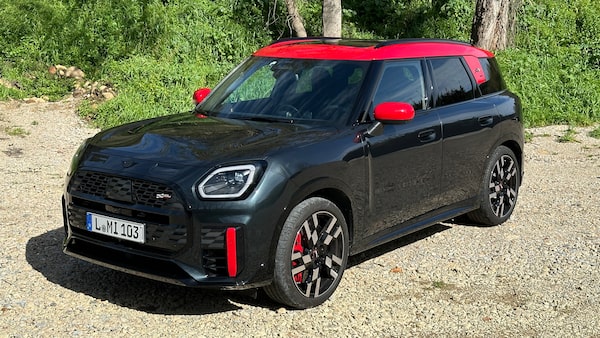
The John Cooper Works edition makes 71 more horsepower and costs $10,300 more than the basic model.Mark Richardson/The Globe and Mail
Looks
The new Countryman is even larger than before – critics moaned then that the Mini was now a Maxi. There’s an extra 136 millimetres of length and 21 millimetres of width, but the biggest jump is in height: The new car is almost 10 centimetres taller. This all means that it looks quite different, with a boxier approach that makes it resemble more a Kia Soul than a funky Cooper.
That styling is functional, however. The Countryman is now more aerodynamic, with a drag coefficient of 0.26, compared with the 0.31 of the previous generation.
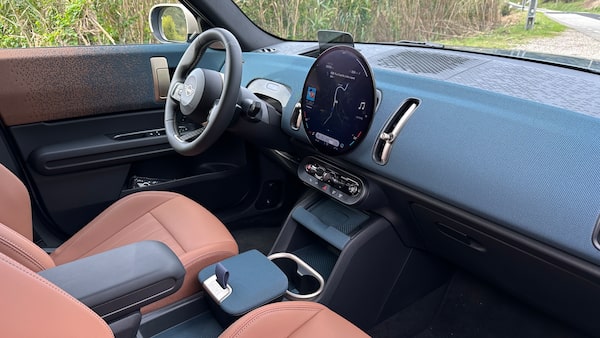
The dash is wrapped with multiple layers of hard-wearing textiles that allow the colours of those beneath to show through.Mark Richardson/The Globe and Mail
Interior
The cabin is both hip and gorgeous. The only gauges in front of the driver are on the head-up display, where they can be seen through polarized sunglasses at last (though still not so clearly as without). Everything else is displayed on the large central screen, which has always been round as a nod to the speedometer in the original pint-sized Mini Cooper of the 1960s.
The dash is wrapped with multiple layers of hard-wearing textiles that allow the colours of those beneath to show through. It’s easier to just look at the photos than try to describe it, but suffice to say, it works very well and allows for a bright and airy feel inside. The car’s extra width adds more than two centimetres of shoulder and elbow space, and there’s plenty of head room in the back.
Performance
I’d liked to have driven the regular new Countryman rather than just the performance versions, but both the conventional John Cooper Works and the all-electric model are quick and nimble. Mini makes a big deal of its “go-kart handling,” which is a marketing way of describing a small car with wheels in the far four corners, but this is still evident in the larger generation.
The John Cooper Works claims to hit 100 kilometres an hour from standstill in 5.4 seconds, which I’m sure is true, but it feels quicker than that. Everything feels quicker when you’re driving a Mini. The all-electric Countryman is 0.2 seconds slower, despite having more torque, owing to its extra weight. All those batteries bring it in at 2,000 kilograms, compared with the 1,660 kilograms of the JCW. This means the Works car is lighter to throw around corners, even if you do have to search through its seven-speed dual-clutch gearbox for the right ratio.
The 312 horsepower of the North American models is 12 more than in Europe, and this would make it the most powerful Mini ever, if not for the all-electric Countryman SE that now makes 313 horsepower. An all-electric JCW Countryman is expected later this year that will change all that.
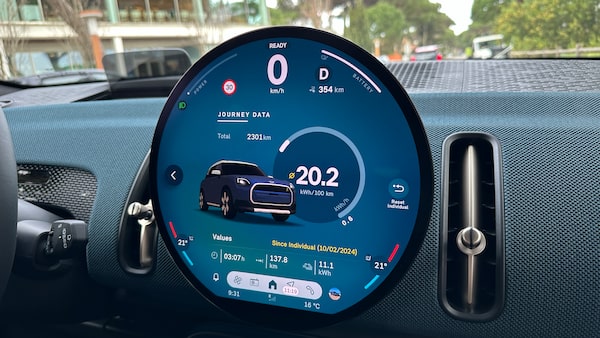
The only gauges in front of the driver are on the head-up display. Everything else is on display on the large central screen.Mark Richardson/The Globe and Mail
Technology
Both Countryman Minis are loaded with new and capable technology, but it’s the gimmicky personality features that will sell the car. There are eight drive modes, called Experience Modes, but only three of them actually change the driving dynamics between Eco and Normal and Sport – the other five are just different themed displays of information and colour on the central screen. Each has its own funky jingle, and there are four sounds available for inside the cabin. They’re all lots of fun.
Historically, Mini has a poor reputation for reliability, and all this extra software just worries this grumpy old guy that there’s now even more to go wrong one day. But when everything’s working as it should, it’s tough to stay grumpy for long.
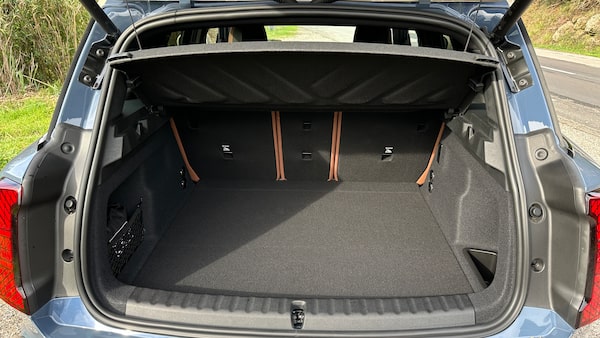
The electric Countryman offers 460 litres behind the second row and 1,450 litres when they’re folded flat.Mark Richardson/The Globe and Mail
Cargo
Luggage space is tight with the seats up, but the rear row folds flat in a flexible 40-20-40 configuration to add much more room. The electric Countryman offers 460 litres behind the second row and 1,450 litres when they’re folded flat, while the JCW, which doesn’t have batteries packed beneath the floor, offers 505 litres, expanding to 1,530 litres.
The verdict
The appeal of any Mini is that it’s a fun car to drive and even just to spend time in. The Countryman has plenty of this, while also being even larger and more practical than before.
The writer was a guest of the automaker. Content was not subject to approval.
Shopping for a new car? Check out the new Globe Drive Build and Price Tool to see the latest discounts, rebates and rates on new cars, trucks and SUVs. Click here to get your price.